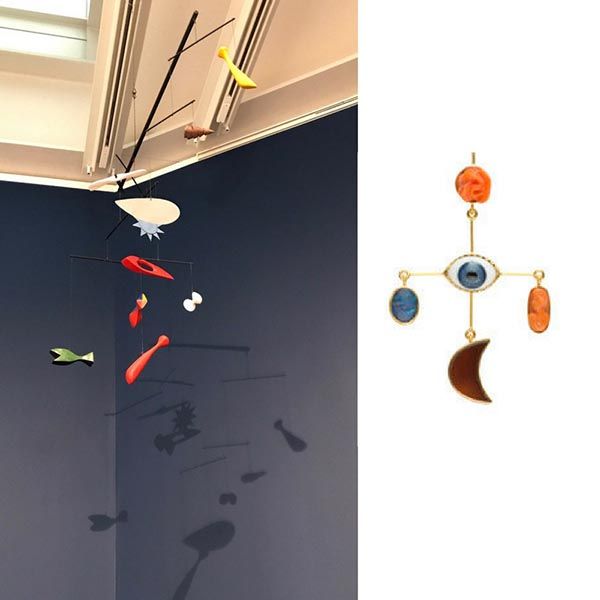
Have you seen the Alexander Calder: Hypermobility exhibit at the Whitney Museum of American Art in New York City yet? If not, make it a priority. Featuring important examples of Calder’s work, it’s a must for any jewelry maker/seller/lover because the American sculptor’s iconic creations continue to have a powerful, lasting influence on the work of present-day jewelry designers and artists.
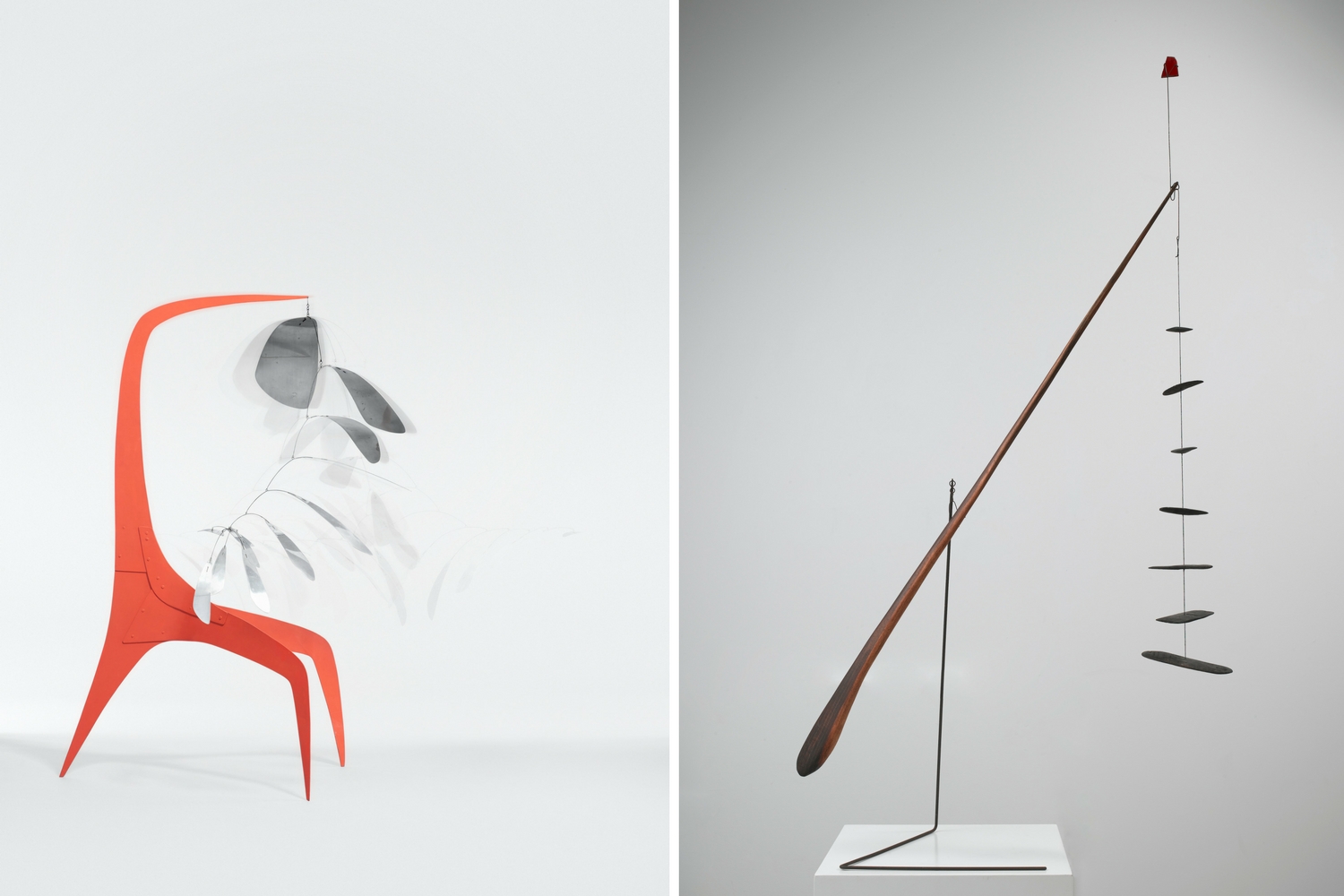 Calder works, from left: Aluminum Leaves, Red Post (1941) and Untitled (1942); both courtesy of the Whitney Museum of American Art
Calder works, from left: Aluminum Leaves, Red Post (1941) and Untitled (1942); both courtesy of the Whitney Museum of American Art
Alexander Calder (1898–1976) is best known for the mobiles he began creating in the 1930s. Art historians refer to his innumerable masterworks as kinetic sculpture, that is, a form of artwork in motion. The wall text at the Whitney exhibit includes a quote from the artist that says it all: “Just as one can compose colors, or forms, so one can compose motions.”
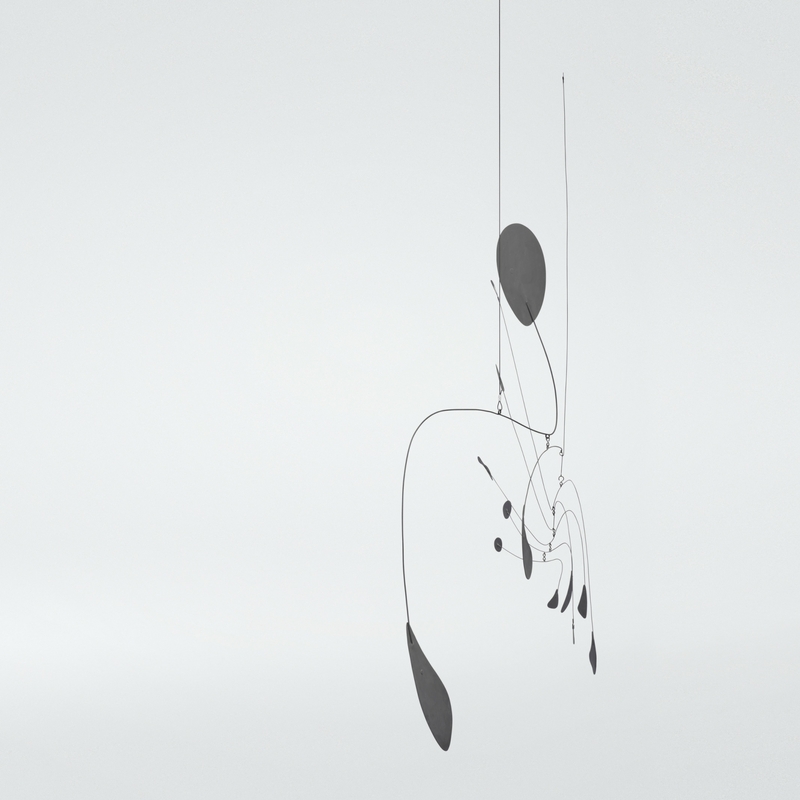
Hanging Spider (c. 1940); courtesy of the Whitney Museum of American Art
It’s a tenet of art and design that many jewelry designers put into practice today. How many times have we heard a designer talk about wanting a piece to move with the wearer, or for jewelry to create a sense of movement and fluidity? Do they know that this is a Calder thing? I have to think that those with an art history or fine arts background do.
“The kinetics and organic shapes reflected in my designs are indeed a nod to Alexander Calder’s mobiles,” says NYC designer Jeanne Atkin, whose earrings are featured in the edit below. “I find his work to be at once lyrical and beautifully engineered.”
Whether consciously or unconsciously, the jewelry highlighted below conjures a number of Calder’s signatures—those he embraced in his famous mobiles (the ones currently on view at the Whitney date from 1940 to 1968), as well as the jewelry he made in the 1930s and 1940s: spirals, concentric circles, and amorphous discs. These include hammered metal textures, labyrinthine, curlicued motifs, and bright pops of color in the form of hovering, oscillating spheres and oddball objets interconnected by wire-thin components.
The Alexander Calder: Hypermobility exhibit closes on October 23, so you have just a few more weeks to check it out. In the meantime, see if you can spot his legacy at work right here.
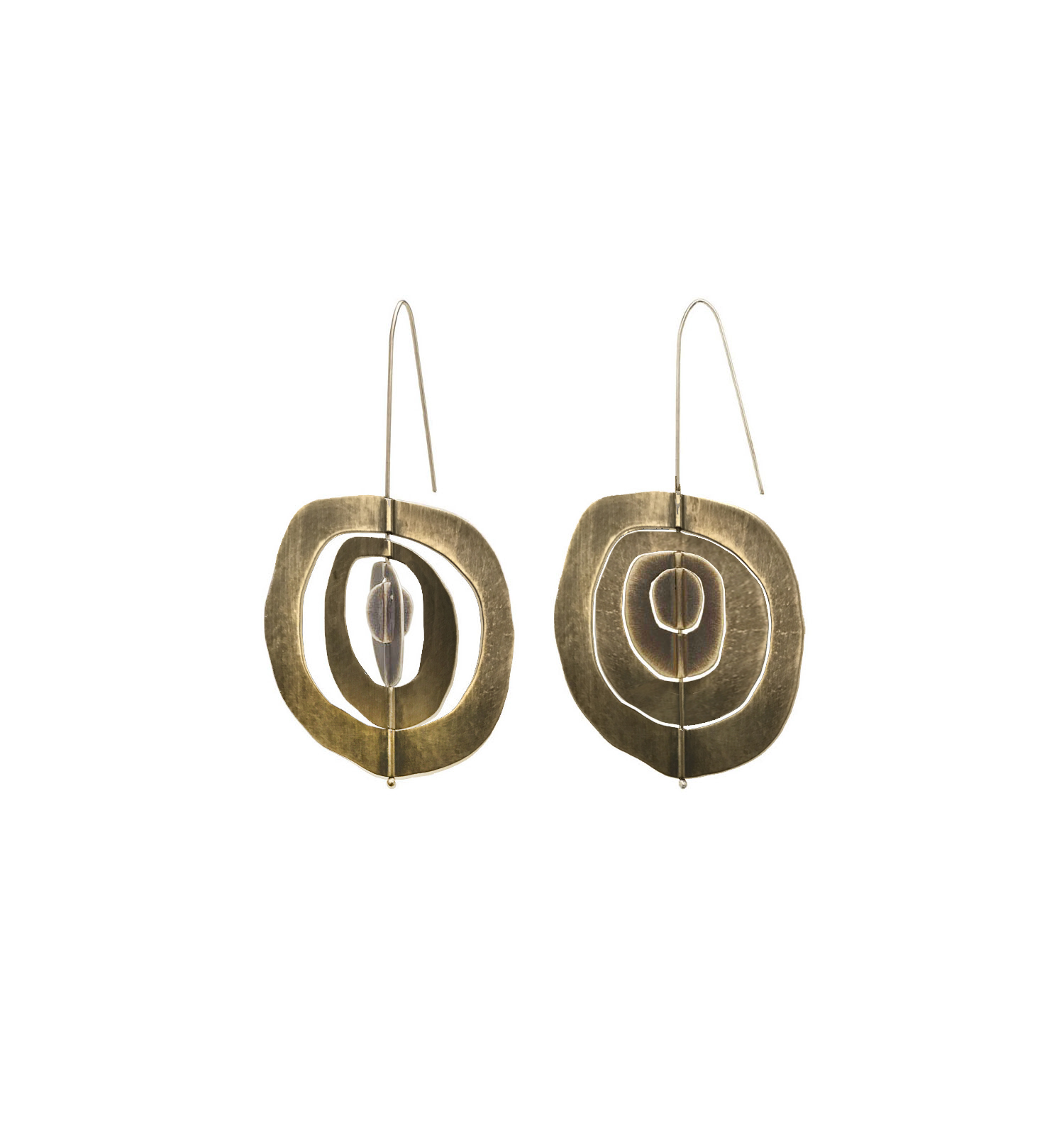 Allium Slice Earrings in hand-cut brushed sterling silver, $425; Jeanne Atkin Laboratory
Allium Slice Earrings in hand-cut brushed sterling silver, $425; Jeanne Atkin Laboratory
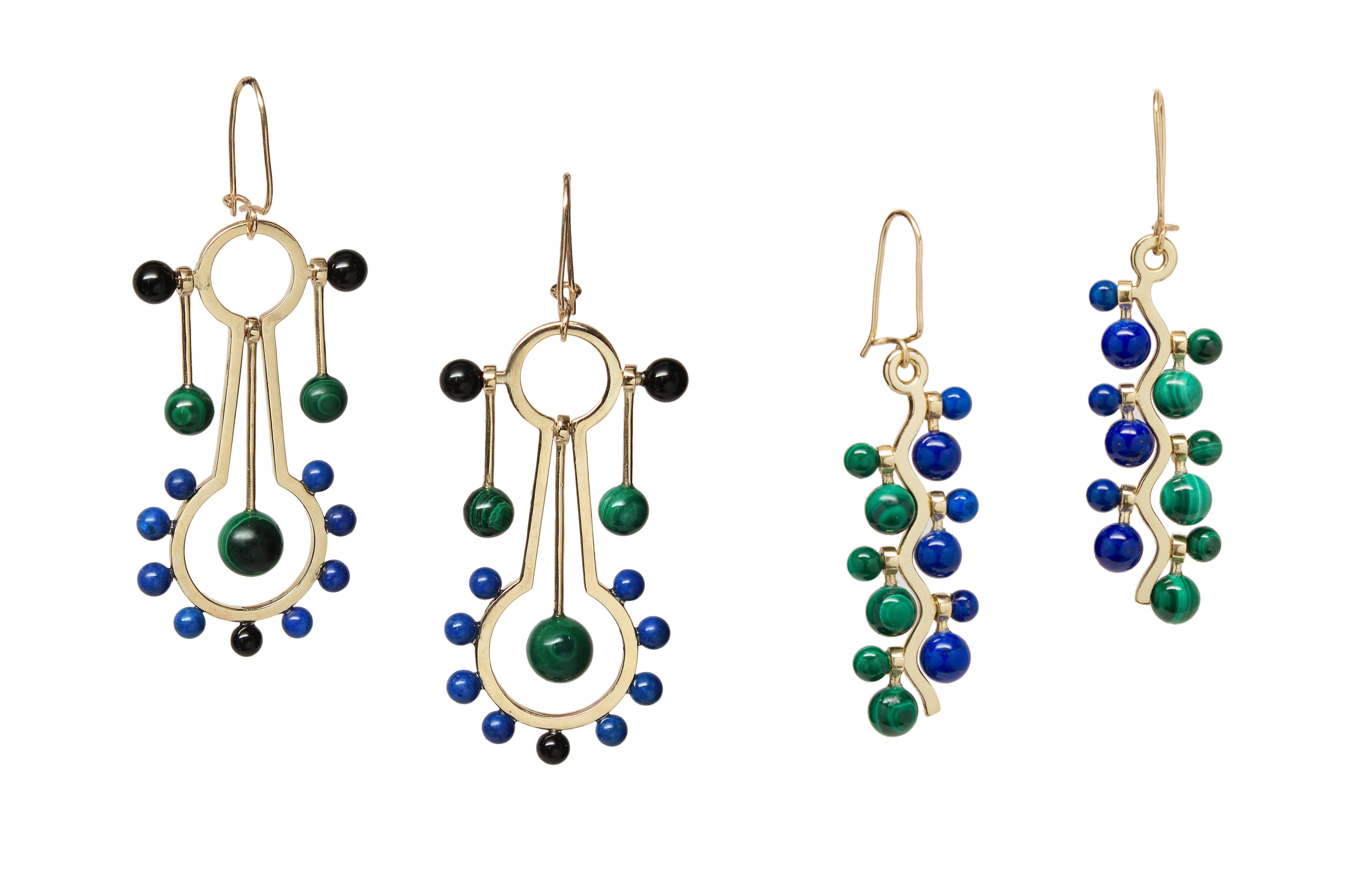 From left: Pendulum Earrings with black onyx, lapis lazuli, and malachite beads in 10k yellow gold, and Cosine Drop Earrings with malachite and lapis lazuli beads in 10k yellow gold, $1,300 each pair; Baker & Black
From left: Pendulum Earrings with black onyx, lapis lazuli, and malachite beads in 10k yellow gold, and Cosine Drop Earrings with malachite and lapis lazuli beads in 10k yellow gold, $1,300 each pair; Baker & Black
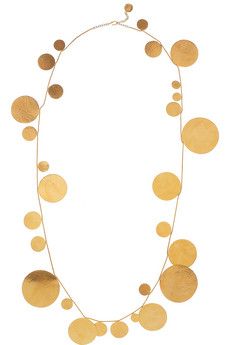
Pastilles Long Necklace in 24k gold-plated brass, about $783; Hervé Van der Straeten
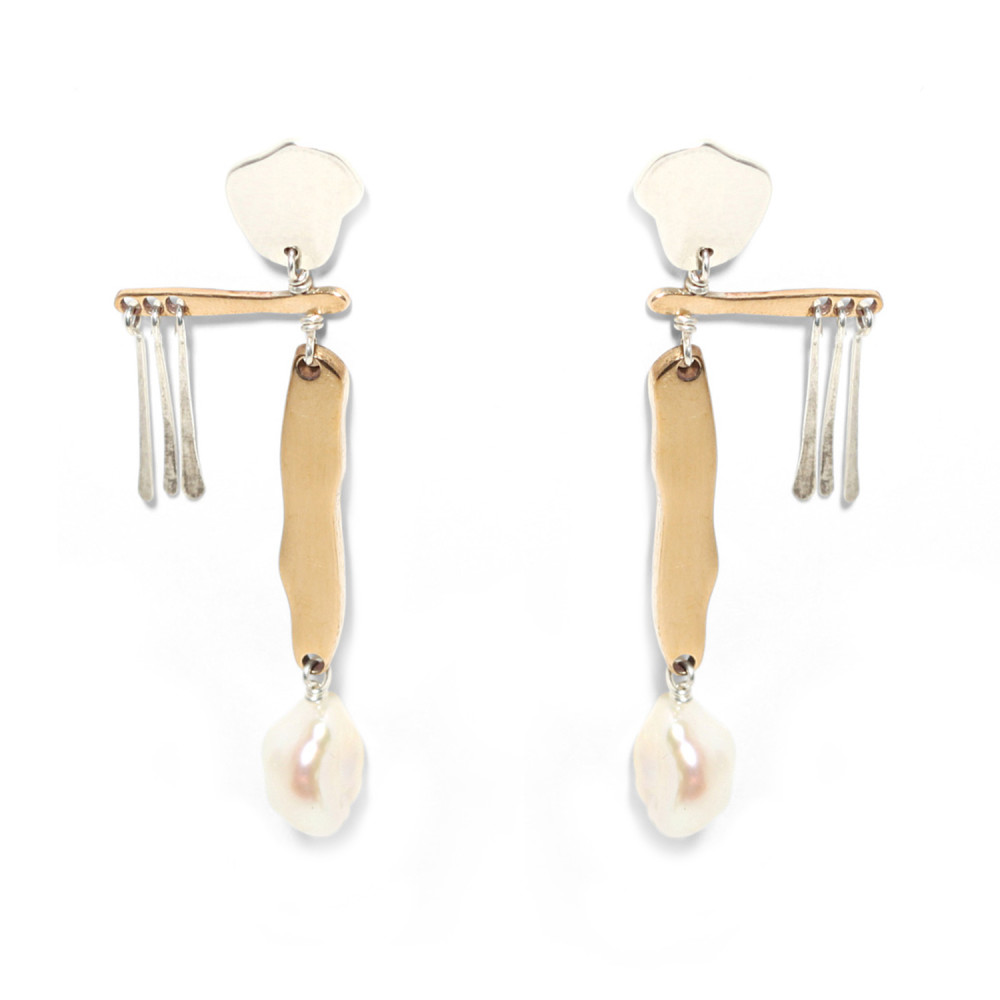 Mobile Earrings with baroque pearl drops in silver and bronze, $275; Faris
Mobile Earrings with baroque pearl drops in silver and bronze, $275; Faris
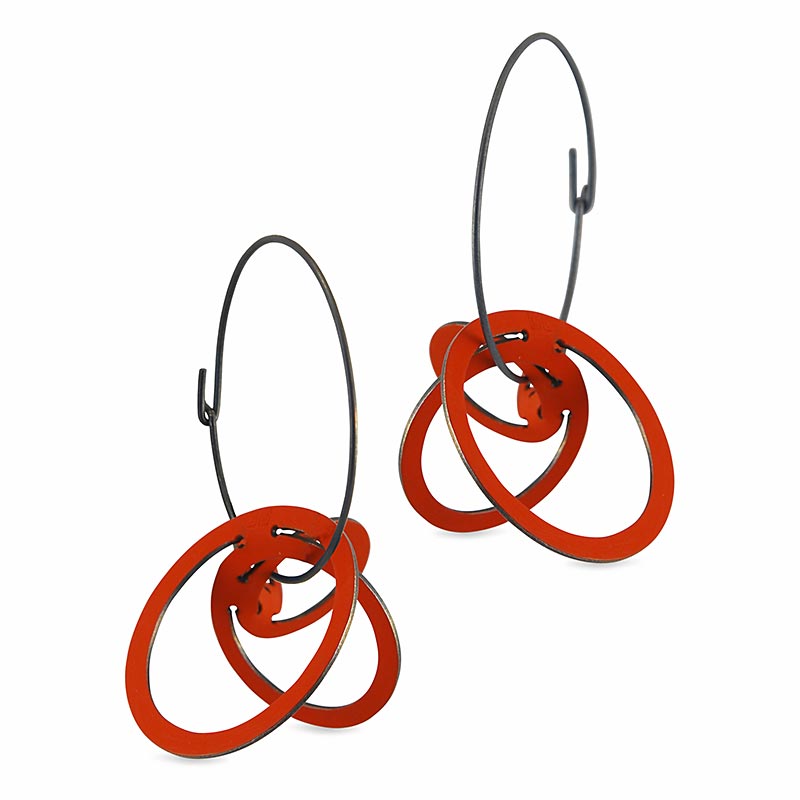 Earrings in monel metal, enamel, and oxidized sterling silver, price upon request; Leonie Westbrook at Studio Ingot
Earrings in monel metal, enamel, and oxidized sterling silver, price upon request; Leonie Westbrook at Studio Ingot
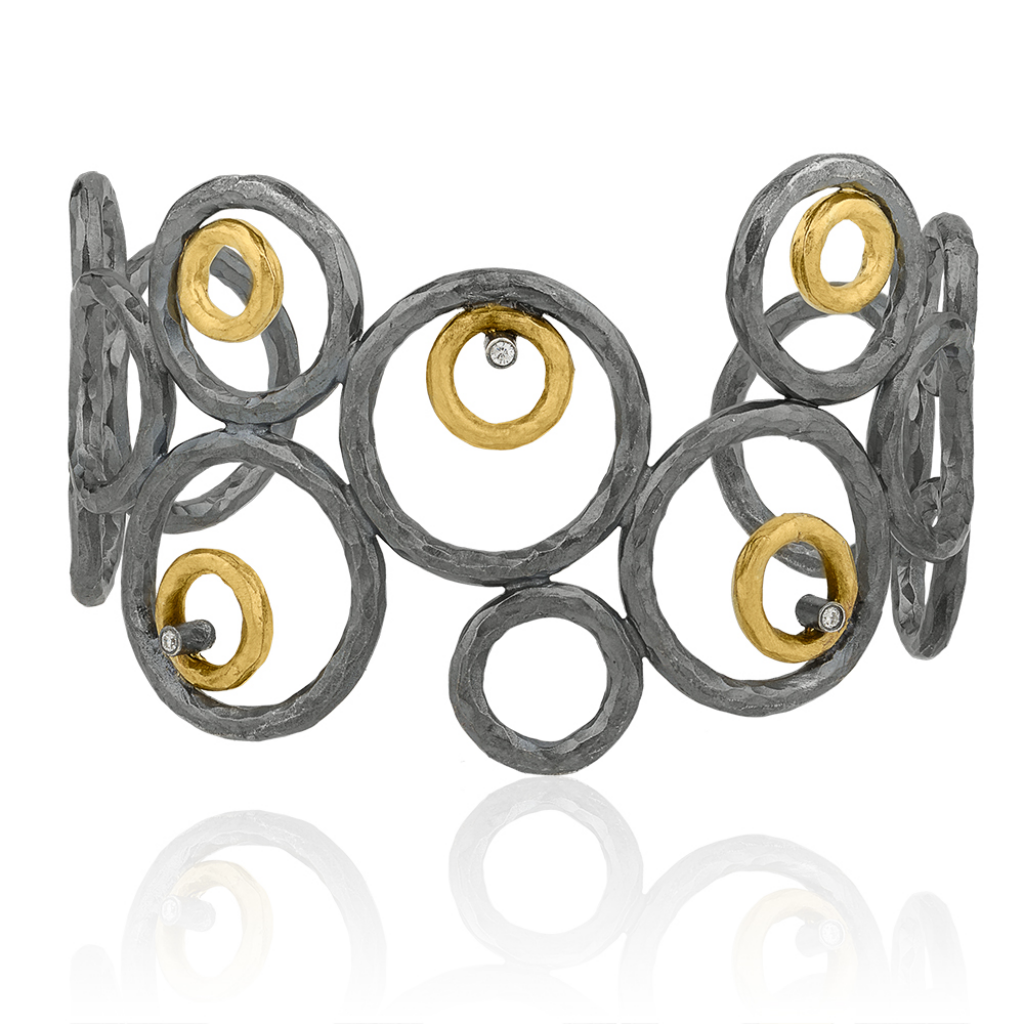 Bubbles Bracelet with diamonds in gold and oxidized sterling silver, $1,650; Lika Behar
Bubbles Bracelet with diamonds in gold and oxidized sterling silver, $1,650; Lika Behar
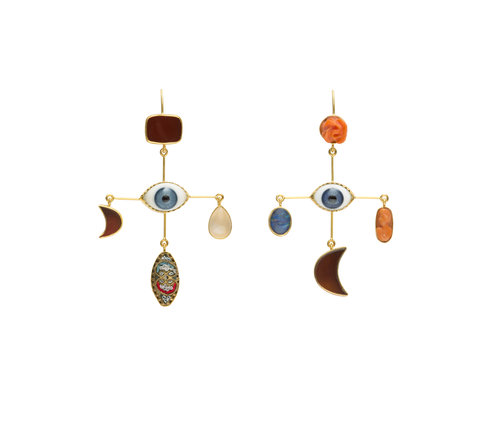 Mismatched Drop Earrings with antique glass eyes, carnelian, agate, moonstone, coral, opal, and other found objects in gold-plated silver, price on request, about $715; Grainne Morton
Mismatched Drop Earrings with antique glass eyes, carnelian, agate, moonstone, coral, opal, and other found objects in gold-plated silver, price on request, about $715; Grainne Morton
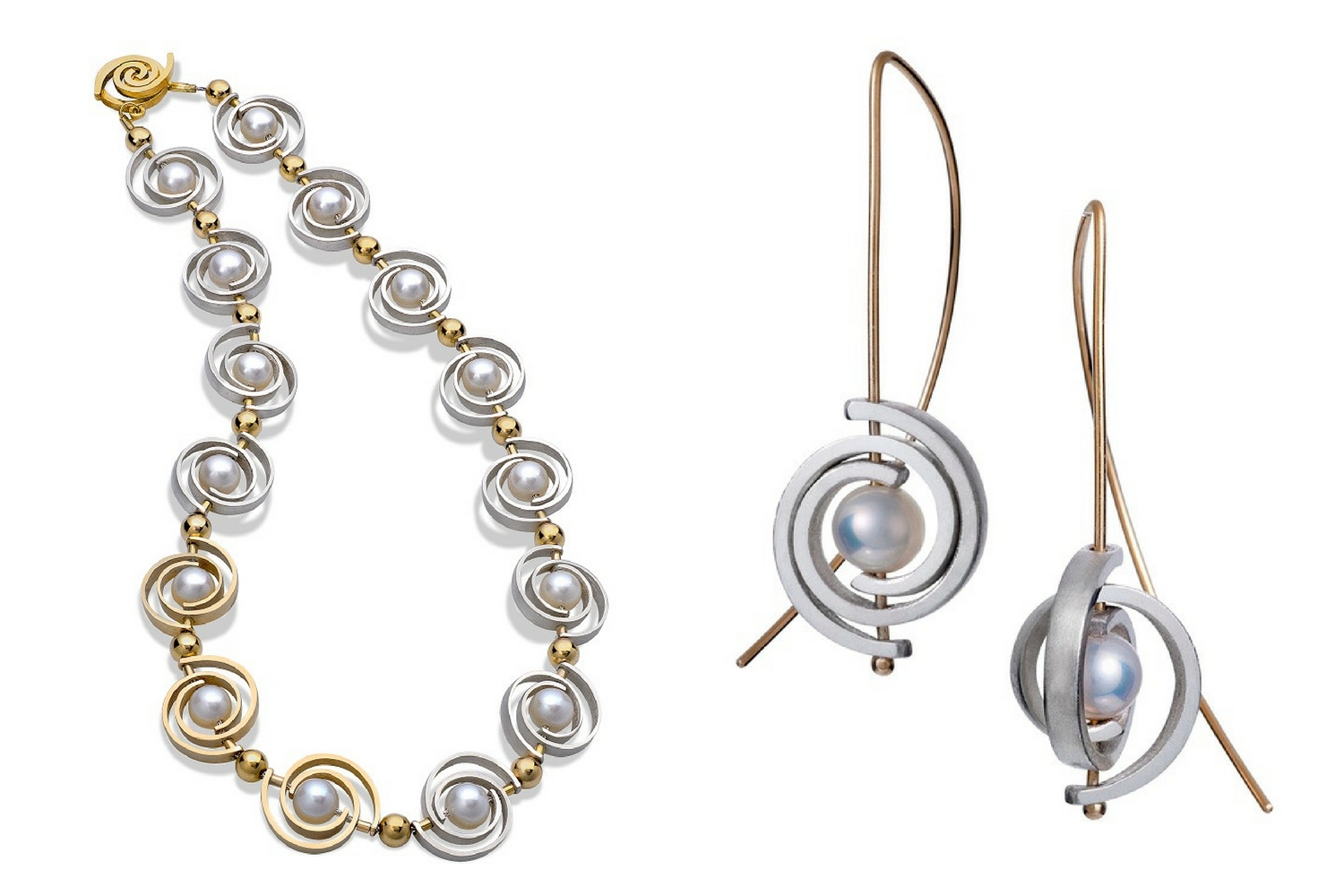 From left: Two-tone necklace with akoya pearls in 14k yellow gold and silver with a toggle closure, $2,683, and Petite Spiral Earrings with pearls, silver, and gold wires, $410; Martha Seely
From left: Two-tone necklace with akoya pearls in 14k yellow gold and silver with a toggle closure, $2,683, and Petite Spiral Earrings with pearls, silver, and gold wires, $410; Martha Seely
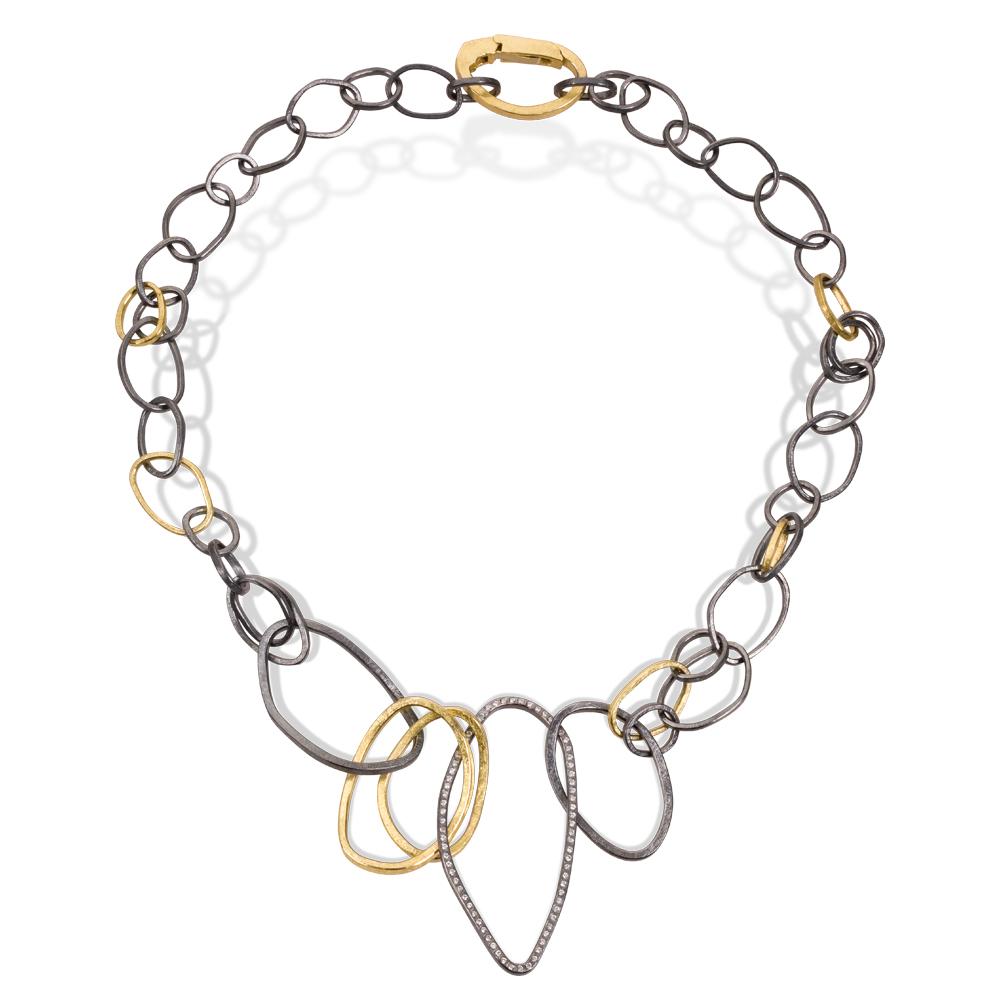 Collar necklace in 18K yellow gold and sterling silver white brilliant-cut diamonds, $15,500; Todd Reed
Collar necklace in 18K yellow gold and sterling silver white brilliant-cut diamonds, $15,500; Todd Reed
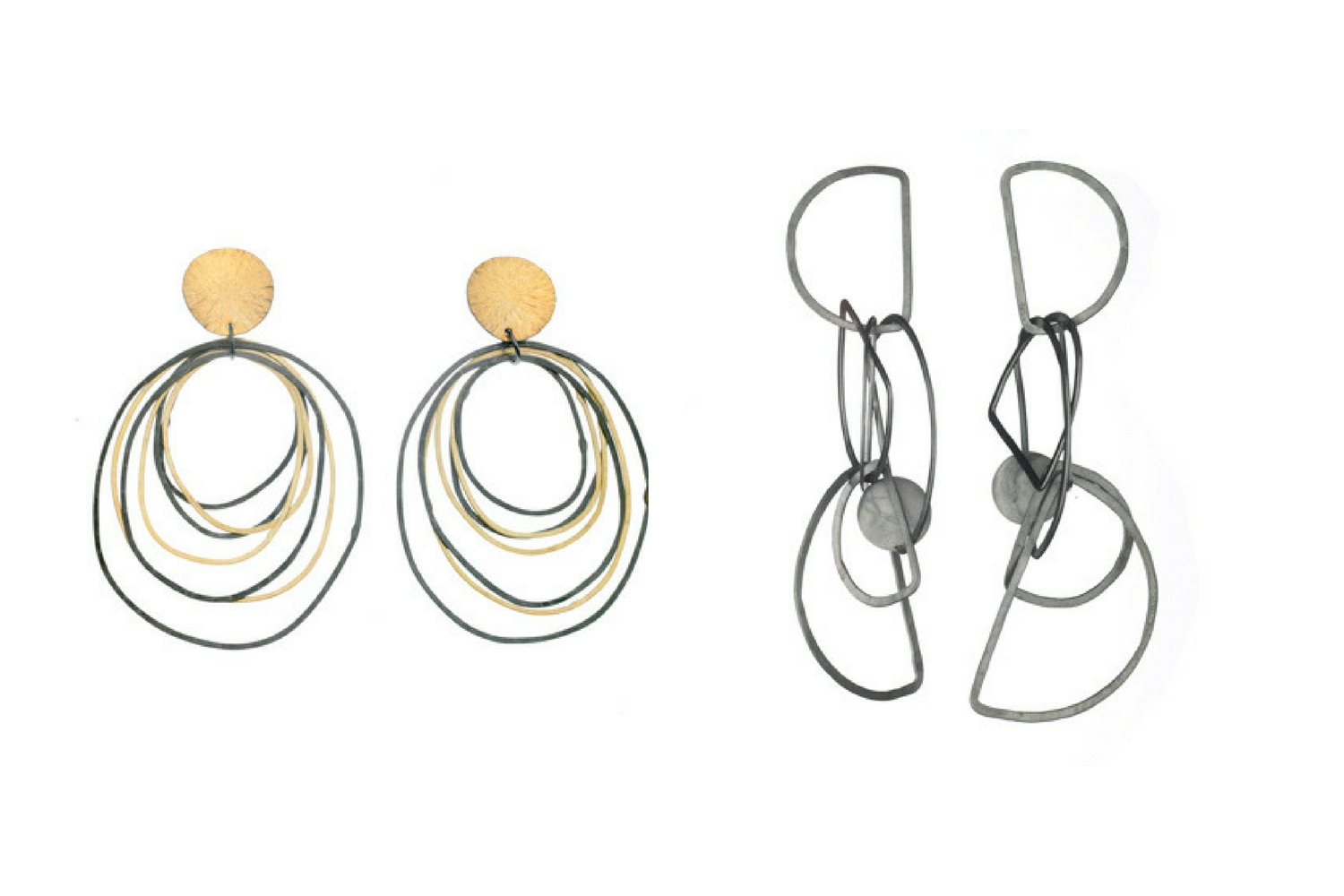
From left: Ripple Post Earrings in oxidized sterling silver, 18k yellow gold and 22k yellow gold, $850, and Tangle Half-Circle Earrings with jasper in oxidized silver, $300; Heather Guidero
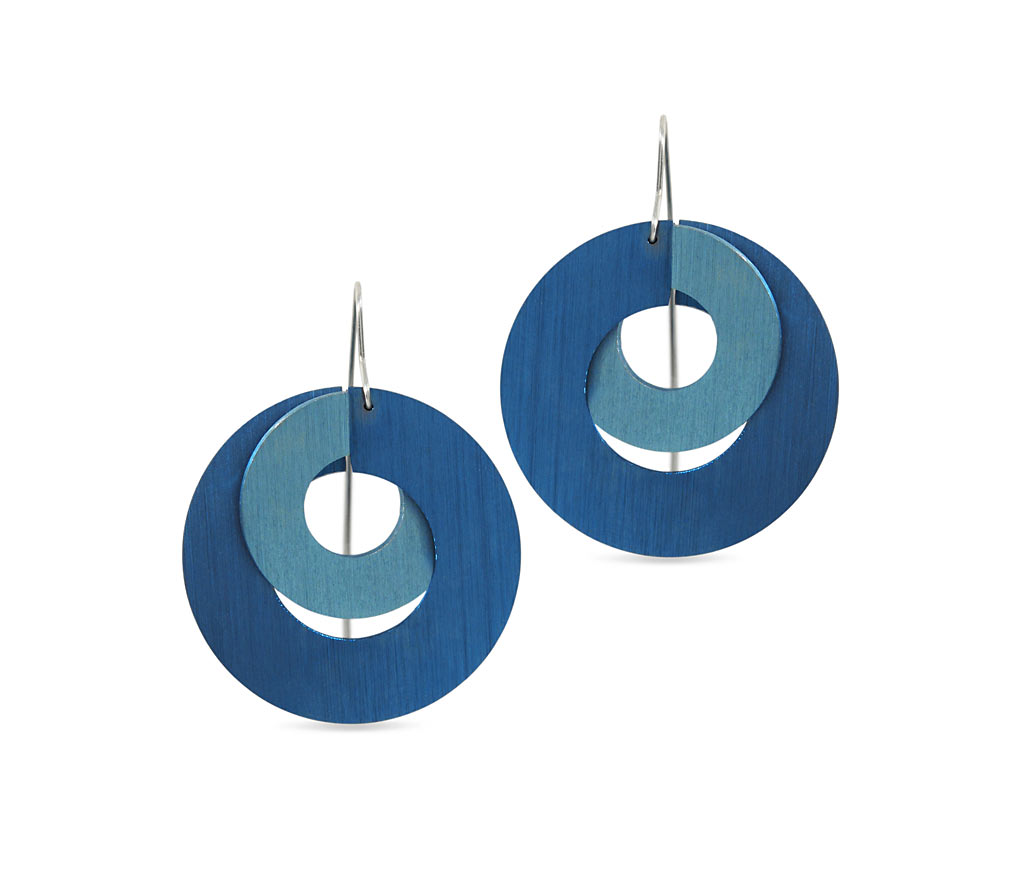 Folded earrings in titanium and stainless steel, price upon request; Venessa Williams at
Folded earrings in titanium and stainless steel, price upon request; Venessa Williams at
Studio Ingot
(Top: Mobile by Alexander Calder via @aelliott718; earring by Grainne Morton)
- Subscribe to the JCK News Daily
- Subscribe to the JCK Special Report
- Follow JCK on Instagram: @jckmagazine
- Follow JCK on X: @jckmagazine
- Follow JCK on Facebook: @jckmagazine